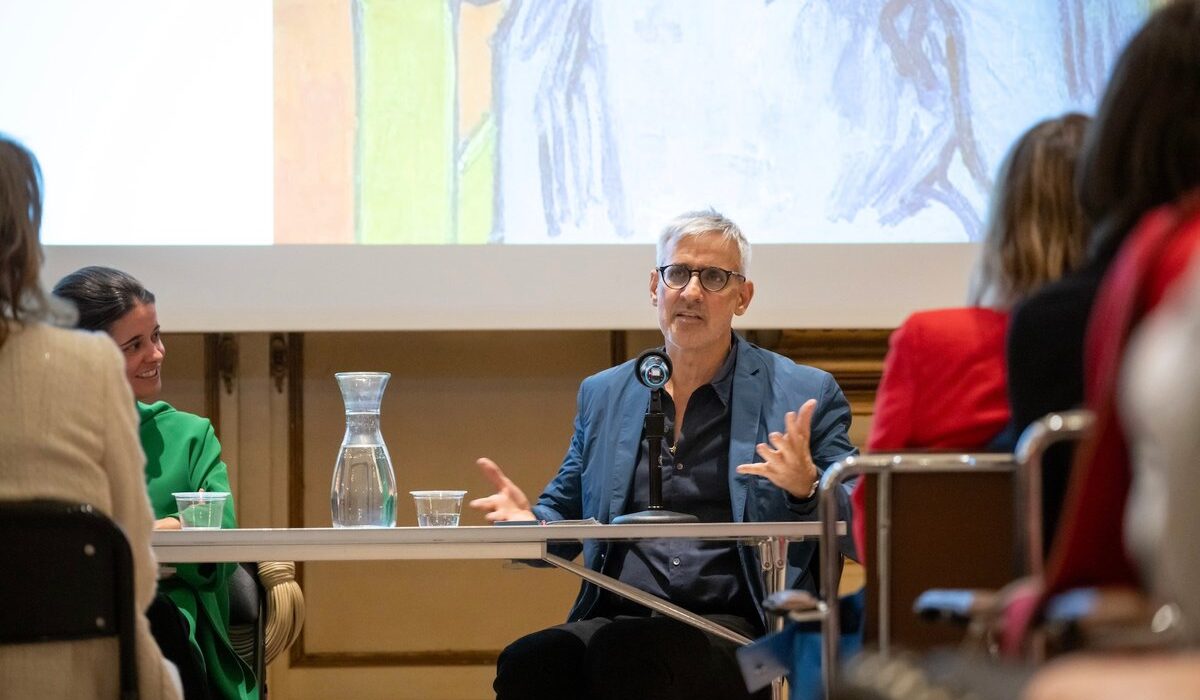For the first time since the 60th Venice Biennale opened in April, the curator of its central exhibition, Adriano Pedrosa, has spoken publicly about his experience and the show’s mixed critical reception. In a conversation earlier this month at New York University’s Institute of Fine Arts in Manhattan, Pedrosa discussed his curatorial tactics and the theme of the exhibition, Stranieri Ovunque—Foreigners Everywhere. Pedrosa was joined by Juliana Sá, the vice president of the Museum of Art of São Paulo Assis Chateaubriand (Masp), where he has served as artistic director since 2014.
A little-known fact about his Venice Biennale, Pedrosa said, is that it is the second exhibition he has realised under the title Foreigners Everywhere. The first was held at the Museu de Arte Moderna de São Paulo (MAM-SP) in 2009 for the biennial Panorama da Arte Brasileira, titled Mamõyguara Opá Mamõ, meaning Foreigners Everywhere in Old Tupi, an extinct Indigenous language. That show proved controversial: for a show intended to survey the state of contemporary Brazilian art, none of the featured artists were Brazilian. Instead, the artists made references to Brazil in their work, broadly suggesting that the principles of the country’s Anthropophagia movement had been reversed, and now it was Brazilian art that was being “cannibalised”, or appropriated, in foreign circuits.
Most of the artists in the international exhibition had never been included in the Venice Biennale before, Sá pointed out. “I read one critique stating that it seemed like this was something I believed in so much that it was almost as if it was a criteria,” Pedrosa said. “And I said: Yes. It was.”
“My mission was to try to give visibility to all these artists that I felt needed visibility because the Biennale is an exceptional event. It’s the exhibition that reinforces what matters,” he said. “I wanted to use this platform to give visibility to particular topics and themes—to the Latin Americans, the foreigners, the Indigenous, the queer and the artista popular, or the Outsider artist.”
Inquiring about the critical response to Foreigners Everywhere, Sá asked, “Were there differences between how the Global South perceived the Biennale versus how Europeans or Americans saw it?”
“An interesting subject that came up quite a lot was a certain critique towards what some reviewers and writers hold as ‘folkloric.’ That was really quite curious to see,” Pedrosa responded. “Even the term artista popular, which means folk artist, is not a term we use [in Brazil] anymore; it’s a patronising term for artists working outside the traditional aesthetic of European art. It’s something that in Brazil and at Masp we are quite advanced in understanding but I think it’s something quite unsettling for the European and the American.”
Pedrosa added that one disquieting critique of his exhibition related to the presence of Indigenous artists at the opening of the exhibition. “We invited all the artists to the exhibition and held a special fundraiser to be able to do so,” he said. “Several of the Indigenous artists chose to wear their traditional costumes to the opening and that was also very unsettling for some of the visitors.”
One seemingly unsettled response was published in the Munich-based newspaper Süddeutsche Zeitung. In the text, the writer states that “a comparison was made with the human zoos at colonial-era shows”. Such comments, Pedrosa said, “take all the agency out of these artists”. He added: “These artists come, contribute and help us. But this is one aspect that has generated a lot of debate. It’s like saying that you need to wear European fashion to attend the Venice Biennale. You need to wear Prada. You need to make work in the European or American aesthetics.”
Pedrosa is the first-ever Latin American curator to lead the Venice Biennale. Before joining Masp, he worked on the 1998 and 2006 editions of the Bienal de São Paulo, the world’s second-oldest biennial exhibition (after the Venice Biennale), and the 2011 edition of the Istanbul Biennial. He has been particularly celebrated for spearheading the series of Histórias (Histories, or Stories) exhibitions at Masp and elsewhere, an ongoing curatorial framework which seeks to examine art history through thematic frameworks like Histórias Afro-Atlânticas (Afro-Atlantic Histories) in 2018 and Histórias Indígenas (Indigenous Histories) in 2023 at Masp.
“Histórias is an interesting term because in Italian, French, Spanish [and Portuguese] it can encompass both history and story. It can encompass the fictional and the non-fictional,” Pedrosa said. “There’s this creative, speculative, critical and historical dimension to the word in those languages. But it doesn’t translate [to English].”

